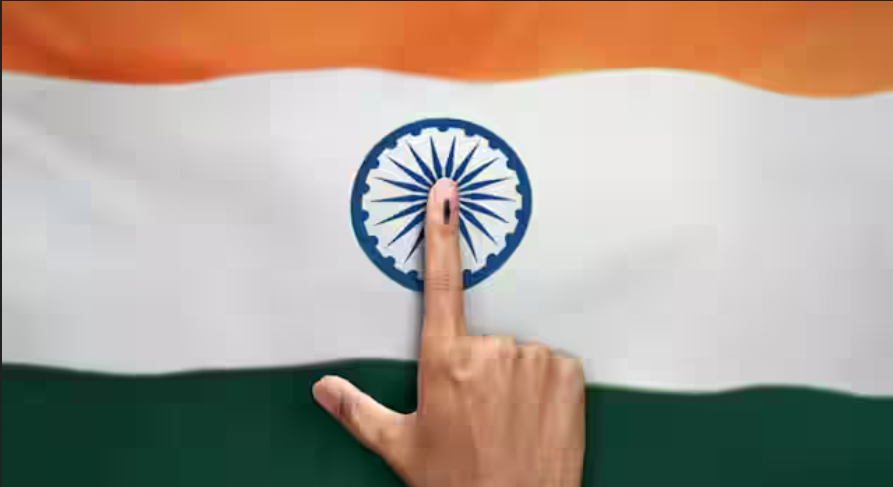By Anushka Rao
Abstract
Is the contentious idea of “one nation, one election” by the Ramnath Kovind Committee – the High-Level Committee on Simultaneous Elections on March 14, 2024, a risk worth taking in India? The central apprehension stems from its constitutional vulnerability in the domain of federalism. Under this framework, state legislatures must align their terms with those of Parliament, thus encroaching upon the autonomous authority of state governance.
Introduction
Undeniably, the ruling party is deeply committed to realizing the vision of ‘one nation, one election,’ a notion steadily gaining traction. But what does this concept truly entail for a diverse democracy like India? Is it merely a political tactic of the Bhartiya Janata Party?
India, the world’s largest democracy, navigates through a perpetuity of elections across various tiers of governance, from the national Lok Sabha to state assemblies and local bodies, adding to its democratic and federalist integrity. Yet, this cycle of elections gives rise to grave concerns: straining the nation’s finances, disrupting policy continuity, and overwhelming administrative resources. In furtherance of addressing these exigencies, the High-Level Committee on Simultaneous Elections was constituted on September 2, 2023, submitting its report on March 14, 2024. However, despite comprehensive consultations, the resultant recommendations betray an air of predictability, failing to offer a substantive departure from anticipated threats to federalism, democracy, regional representation, and government accountability.
CURRENT PROPOSAL
‘One nation, one election’ means consolidating voting processes, wherein every citizen would cast their ballot for both Lok Sabha and State Assembly elections concurrently, possibly through a phased approach across all states. However, a fundamental challenge arises from the ambiguity within the Indian Constitution regarding the synchronicity of state and union elections. While historically, state elections were aligned with general elections until 1967, the premature dissolution of the fourth Lok Sabha led to their divergence. The Kovind committee advocated for the implementation of simultaneous elections to both the Lok Sabha (House of the People) and the State Legislative Assemblies as the initial phase of their proposal. Subsequently, in the second phase, elections for Municipalities and Panchayats could occur within 100 days following the conclusion of the Lok Sabha and State Legislative Assembly elections. The principal arguments in favor of this approach are twofold: firstly, it is posited that such synchronization would lead to a reduction in election-related costs, including campaign expenditures; secondly, it would liberate
political parties from the perpetual campaign cycle, enabling them to concentrate on governance and constructive opposition over a continuous five-year period.
THREATS TO DEMOCRACY AND FEDERALISM
Despite its seemingly appealing facade, and touted benefits of curbing financial drainage and enhancing economic efficiency while mitigating policy paralysis, the implementation of simultaneous elections is a far greater threat than the benefits it promises. It jeopardizes the foundational pillars of democracy and federalism, potentially increasing the centralization of power within a nation already leaning towards centralization. This policy seems to cater only to the agenda of politicians advocating for intensified centralization within an already overly centralized union. Such a move not only undermines the federalism envisioned by our nation’s founders but also poses a grave threat to the diverse fabric of our union. Hence, it becomes critical to vehemently reject this proposal.
Put simply, it undermines democracy. There is no fair reason why the election schedules of different states should be tethered to those of the central government. Such a move would strip away one of the fundamental aspects of Westminster democracy: the flexibility for a government to dissolve itself or be dissolved if it loses majority support. In such cases, the governor, acting on behalf of the president, must either invite another coalition to form a government or call for fresh elections. However, keeping a defunct assembly in a state of limbo while the governor administers the state, potentially under central influence, until the next scheduled election date, is inherently undemocratic. This hinges on a government’s legitimacy derived from proving its majority from one election to the next.
DIMINISHING ACCOUNTABILITY
Further, what about accountability? Reducing elections to a once-in-five-year affair will only exacerbate the issue of political unaccountability, allowing parties to operate with greater impunity, beholden solely to the interests of select politicians. This erosion of accountability far outweighs the purported savings in election costs.
The exorbitant price of elections stems from this very lack of accountability. With public disillusionment with candidates’ performances, campaigns resort to extravagant mega rallies, extensive hoardings, and posters to sway voters. The creation and cultivation of vote banks add to the financial burden. In today’s age, social media necessitates additional spending, including on troll armies and the manipulation of electoral rolls. Furthermore, the last-minute hiring of workers, mobilization of crowds, and distribution of money and gifts further inflate campaign expenditures. Curtailing the frequency of elections may seem like a cost-saving measure, but it ignores the issue of political accountability. Hence, considering something so instrumental, this idea needs to be rethought.
THREATS TO REGIONAL REPRESENTATION AND DIVERSITY
At its core, this move tilts the balance in favor of large national parties, particularly those in power at the Centre, who can leverage their resources and influence across states. Meanwhile, regional parties, which primarily focus on elections within their respective states, would find themselves at a significant disadvantage. The crux of the issue lies in the disproportionate advantage enjoyed by national parties with the consolidation of elections every five years. By centralizing campaigning efforts and resources, these parties stand to benefit from economies of scale, overshadowing the voices and interests of regional players. This lopsided dynamic undermines the principle of federalism, which champions the autonomy and representation of states within a unified nation.
Moreover, the recommendation to stagger elections for municipalities and panchayats in the second phase further exacerbates the imbalance. This two-phase approach perpetuates the dominance of national parties in the political landscape, marginalizing the influence of grassroots level governance and regional diversity. The push for simultaneous elections not only jeopardizes the delicate balance of power between the Centre and the states but also threatens the diversity and representation integral to India’s democratic fabric. Such a move serves the interests of dominant national parties, particularly the ruling BJP, while disenfranchising regional voices and eroding the foundational principles of federalism.
CONSTITUTIONAL AMENDMENTS: A HERCULEAN TASK
The proposition of simultaneous elections necessitates extensive amendments to the Constitution. Amendments to crucial articles such as Article 83, Article 85, Article 172, Article 174, and Article 356 would be required. These amendments, which pertain to the duration of parliamentary and state legislative houses, as well as the mechanisms for their dissolution and imposition of the President’s Rule, show the magnitude of constitutional reform required to realize this ambitious endeavor. The very essence of India’s federal structure demands a consensus among all political parties and state governments. The web of governance, woven with delicate threads of federalism, mandates a collective agreement that respects the autonomy and diversity of states within the union.
Practical considerations add another layer of complexity. The logistical requirements for simultaneous elections, including the procurement of additional electronic voting machines (EVMs) and Voter Verifiable Paper Audit Trail (VVPAT) machines, entail a substantial financial investment running into thousands of crores. The need for periodic replacement of these machines, with a lifespan of only 15 years, shows the fiscal commitment needed. Legal hurdles loom large as well. The amendments to the Constitution and the Representation of the People Act, of1951, are indispensable for altering the fixed terms of assemblies. The proposed introduction in the Committee Report of Article 324A and amendments to Article 325 signal a seismic shift in electoral procedures, necessitating ratification by the states under Article 368(2) of the Constitution.
Hence, the realisation of ‘one nation, one election’ seems like an elusive goal. It demands meticulous planning, unwavering political consensus, and a judicious balance between efficiency and democratic principles. However, the current landscape does not indicate any progress towards overcoming these challenges.
CONCLUSION
In the grand scheme of India’s democratic landscape, ‘one nation, one election’ emerges not as a beacon of progress, but rather as a contentious ploy veiled in the guise of efficiency. Does the centralization of power inherent in this proposal truly serve the interests of a nation celebrated for
its federal structure and regional diversity? What about the accountability of our elected representatives, sacrificed by diminished electoral oversight? As we contemplate the constitutional amendments, one cannot help but wonder: Is the aspiration for synchronized governance overshadowing the fundamental values of democracy and federalism? As we navigate through this turbulence, it becomes important for citizens to prioritize democratic principles over expedient solutions, and reject this proposition altogether.
Author’s Bio
Anushka Rao is a third-year B.B.A., LL.B. student at Jindal Global Law School, and a Columnist at CNES.

